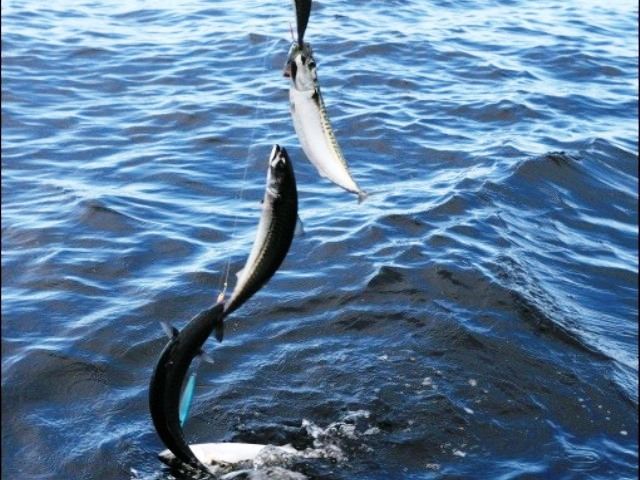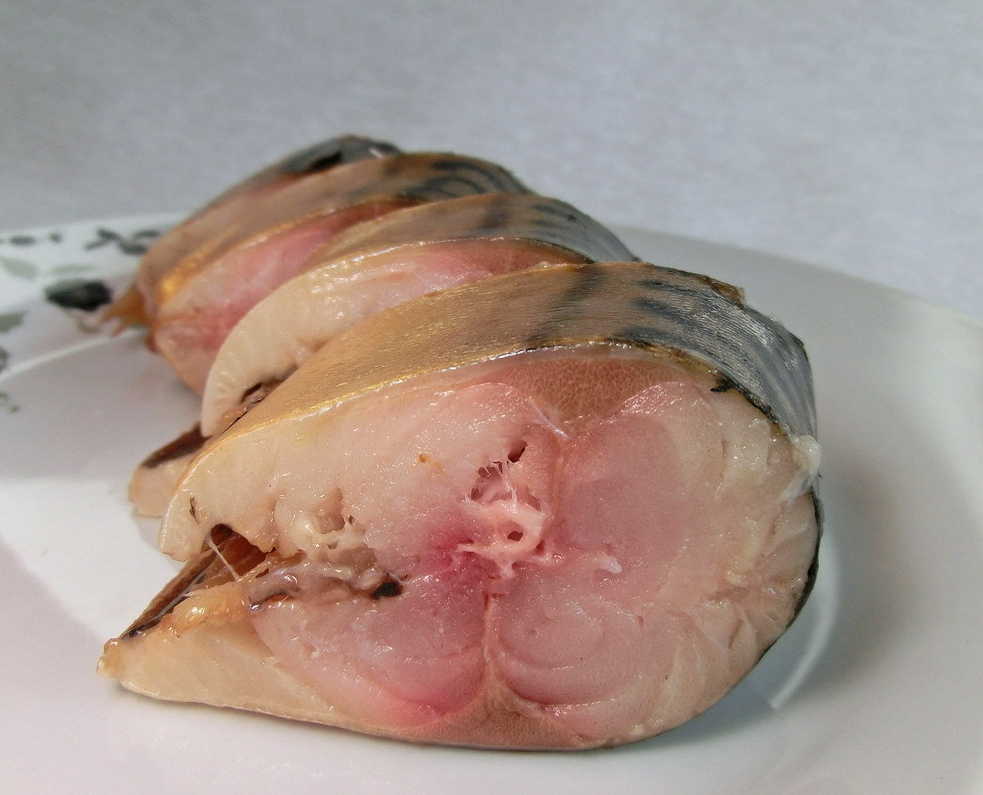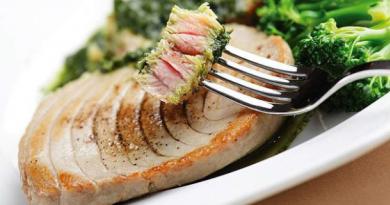Mackerel is a genus of fish belonging to the mackerel family from the perch-like order. The genus includes four species of fish that are very similar to each other. Mackerel is one of the valuable commercial fish: its meat is saturated with useful fatty acids and easily digestible protein.
Appearance and varieties
Mackerel, or as it is also called - mackerel, has a spindle-shaped body: a conical head and tail are thin, and in the middle the body reaches its maximum thickness. The maximum body length is 60 centimeters, but the bulk of the mackerel has a body length of no more than 30 centimeters. Individuals of mackerel rarely exceed 1.6 kilograms in weight, and most fish weigh no more than 300 grams. There are 4 main types of mackerels:
- Japanese (blue);
- African;
- Atlantic (ordinary);
- Australian.
All types of fish have the same silver body color, across which there are dark stripes. The back is blue-green. The African mackerel is considered the largest mackerel: sometimes there are individuals up to 63 centimeters and weighing more than 2 kilograms. Japanese mackerel has the minimum size. Her body dimensions do not exceed 44 centimeters, and her weight is 1 kilogram and 350 grams.

Mackerel is characterized by the presence of small cycloid scales. She has two fins on her back. The front fin is spiny, it is located much further from the back. A distinctive feature of the fish: between the anal and caudal fins, as well as between the caudal and posterior dorsal fins, there are from 4 to 6 additional very small fins that look like brushes. The pectoral fins are located quite high.
Among the mackerels, the Atlantic, or common mackerel, stands out. It differs in that it does not have a swim bladder, which is present in other types of mackerel. Scientists suggest that such a feature in the structure of the body of the common mackerel arose as a result of the loss of its significance. Mackerel during the hunt rises to the surface of the water with sharp movements and just as sharply deepens into the ocean: the swim bladder would prevent such a rapid movement. High-frequency muscle contractions help mackerel to stay on a certain horizontal line in the water column.
Distribution and lifestyle
Mackerel is distributed everywhere: it is found in all oceans except the Arctic. Mackerel swims in the inland seas: Black, Marmara and Baltic. Atlantic mackerel is common along the European coast from the Canary Islands to the British Isle. In warm seasons, fish can often be found near Iceland, as well as near Murmansk. There are cases when individual shoals migrated to the White Sea and to the islands called Novaya Zemlya.
Mackerel is a migratory fish. This is due to the fact that she lives only at temperatures ranging from 8 to 20 degrees Celsius. In place, only fish living in the Indian Ocean remain wintering: it maintains an optimal temperature regime. Atlantic mackerel moves from the Black Sea to the northern coast of Europe, where there are warm currents when the sea temperature drops to 10 degrees Celsius. It is rare for mackerel to winter off the coast of Turkey.
Mackerel migrations have a feeding character. Wintering fish shows low activity, during wintering it practically does not feed. At this time, mackerel prefers to stay near the slopes of the continental shelves at a depth of up to 250 meters. From the Sea of Marmara back to the Black Sea mackerel starts migrating in spring or early summer after spawning.
Diet
All types of mackerel are predatory fish. They feed on zooplankton and small fish. Individuals of fish gather in flocks and begin their hunt. The basis of nutrition is the Black Sea small fish in the form of sprats, anchovies, gerbils or slats. Mackerels force fish accumulated in schools to swim to the surface of the water, where a specific “boiler” is formed. From afar, the feeding place of mackerel can be distinguished by the abundance of predators, the main food of which is large fish: dolphins and gulls.

Australian mackerel is considered especially voracious. Local fishermen say that it is easy to catch it on an empty hook. The fact is that the mackerel sees its potential prey in everything. Anglers get especially large catches of mackerel when using a tyrant.

reproduction
Mackerel reaches sexual maturity in the second year of life. Mackerel spawns annually throughout its life, and the fish dies when it reaches 18 or 20 years of age. The older fish are the first to spawn. The spawning ends at the end of July with young individuals of mackerel.
Mackerel is characterized by portioned spawning. Mackerel spawning begins in the spring and ends in the middle of summer, but its peak is in the middle and end of spring. Mackerel uses coastal zones and the shelf as spawning grounds. Spawning occurs at a depth of up to 200 meters. Mackerel is a very prolific fish. She can sweep up to 500 thousand eggs.
Mackerel has pelagic eggs, the diameter of which is on average 1 millimeter. Each egg contains a fat drop. Caviar develops within a week at fairly low temperatures (about 13-14 degrees Celsius). But development occurs twice as fast at a temperature of 16 to 19 degrees.
When mackerel larvae hatch, they are less than 3 millimeters long. The fry grow very fast. Depending on the time when spawning occurred, by mid-August, mackerel fry reach a length of 3 to 6 centimeters. By the end of summer, their length is 10-12 centimeters, and in the middle of autumn - already 15-18 centimeters. The younger the mackerel, the faster it grows. After reaching sexual maturity, when the body length of the fish is about 30 centimeters, the growth rate is significantly reduced.
Due to the spindle-shaped body, developed muscles and the absence of a swim bladder, the Atlantic mackerel is capable of very fast movement. In a calm state, the fish moves at a speed of 20-30 kilometers per hour. When a mackerel makes a dash to grab a prey, it takes just 2 seconds to reach a speed of 80 kilometers per hour. For comparison: modern fireballs need 2-3 seconds to accelerate to 100 kilometers per hour. It is not surprising that the mackerel is capable of such long migrations.

Mackerel is such a common and valuable commercial fish that only off the western coast of Europe its catches annually range from 50 to 65 tons. For one dive of fishing units, you can catch up to 3 centners of mackerel. The fish is frozen. It goes on sale, both in frozen form, and in salted, smoked.
Thus, mackerel is one of the most common fish that plays an important role in the food industry. She strikes with the beauty of her body and the ability to move very quickly. In cooking, mackerel is respected for its tender and tasty meat, as well as for the absence of small bones, moderate fat content and high nutritional value.



